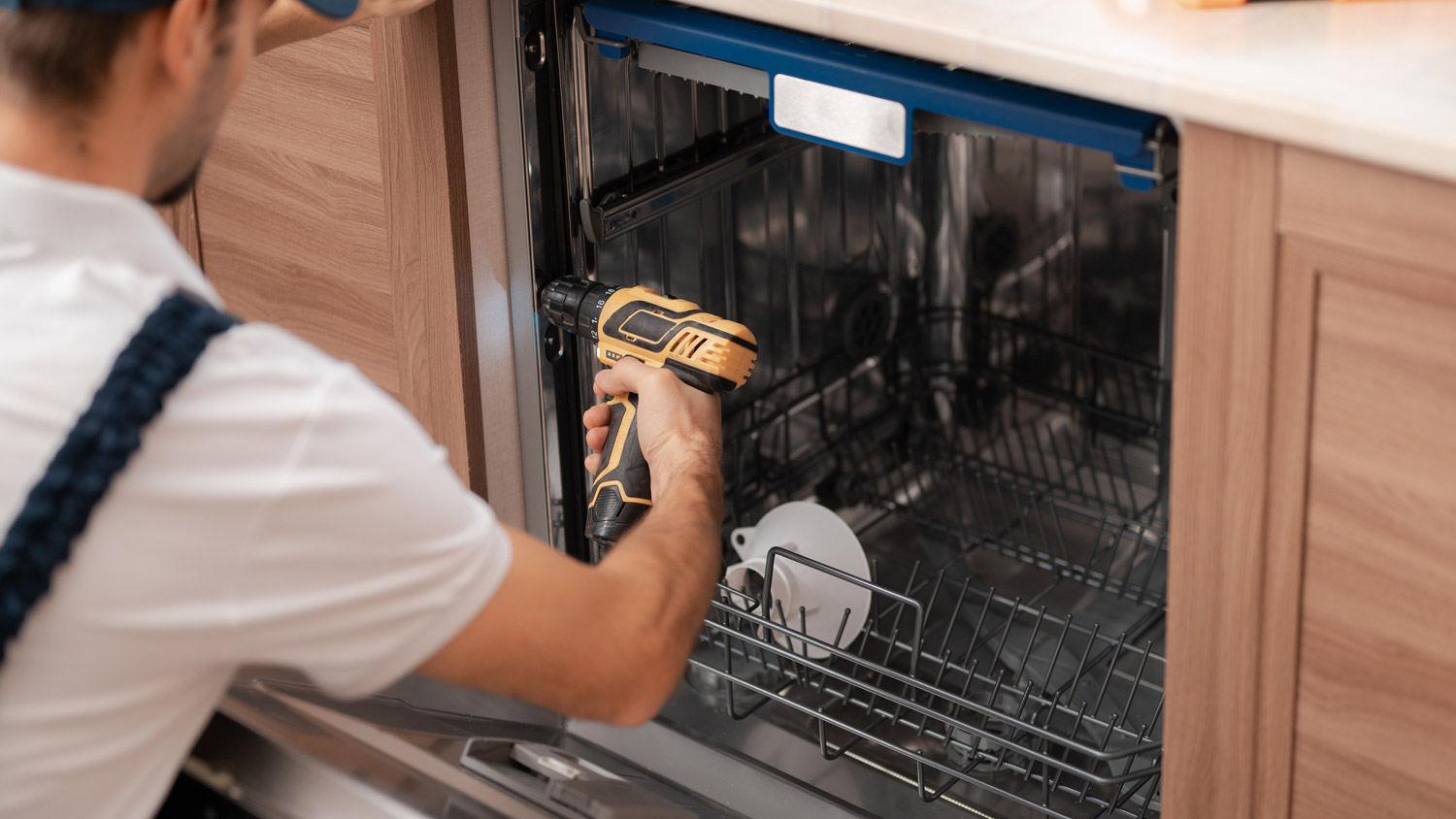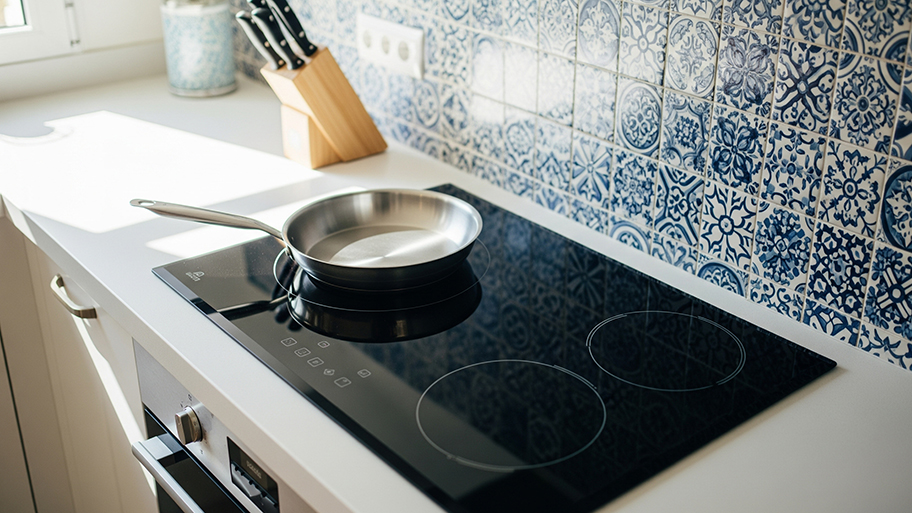
Discover the average dishwasher installation cost, key price factors, and tips to save on your project. Get transparent, expert-backed estimates.
Clean clothes and dry floors will be yours once again


Nothing feels fresher than finishing up a massive load of laundry, but a clogged laundry drain will stop you in your tracks. Learning how to unclog a washer drain can keep a clog from creating standing pools of water around the washer. Read on for the easiest do-it-yourself methods to get your washer drain moving again.

Identifying a clogged laundry drain is both simple and deceptively complex. Pooled water around the washing machine likely indicates a clog, but it could also be an issue with the washing machine itself. Similarly, venting issues on the roof can lead to water pooling in the home, which mimics a clog. Here are some ways to make sure you’re dealing with a clogged drain.
Check your vent pipe on the roof for blockages and clear them out before proceeding. Once finished, run an empty load in the washing machine. Did the water level increase, or did you notice any leaks during the cycle? If so, the issue is not with your vent pipe.
Next, rule out the washing machine and its related components. Inspect the water hoses leading to the wall, looking for tears or other signs of leaks. Also, check the mesh filter located on the machine at the beginning of the water line for blockages.
If you notice anything wrong with the machine, tighten the various hoses, change out O-rings, replace the water inlet mesh screens, and complete other common maintenance tasks. Also, check the drain line and make sure it’s secure. Finally, use a level to ensure the washer is standing level.
Run the machine again and check for active leaks and an increase in standing water. Is the water draining smoothly? If so, it was a machine issue and not a drain problem.
Is there a sink in the room? If so, fill it with water and see how it drains to rule out the machine. If you ruled out all of these scenarios, move on to find out how to solve the drain clog.
Home projects that involve water are risky. One wrong move can cause severe water damage to your home. If you have an appliance—such as a washer or dishwasher—with severe drainage issues, we strongly recommend hiring a professional to repair it.

Hot water and baking soda make for a simple, powerful, and low-cost solution here. This combination is one of the best homemade solutions for unclogging a drain. Start by unplugging the washing machine and gently moving it away from the drain. Do this slowly so as not to disturb the hoses on the back.
Boil at least 1 gallon of water and have it ready to go. Between the hoses where the machine hooks up to the water supply, you’ll find the washing machine drain hose. Remove it from the drainpipe, and you’ll be able to see directly down the pipe.
Slowly and carefully pour the hot water down the pipe. You can use a funnel with a narrow-mouthed pitcher to avoid spills. Add the baking soda and pour it down the drain. Pour approximately 1 cup for every gallon of boiling water. Make sure to do this after pouring the water and not with the water.
For an added boost, make a 1-1 mixture of vinegar and water and pour this down the drain last. Repeat as necessary.
Standard drain cleaner is a fairly reliable option here, though these liquid drain cleaners are on the abrasive side, so don’t go overboard and choose a non-corrosive product. Wear latex gloves and protective eyewear when dealing with heavy-duty drain cleaners.
Unplug the machine and move it out of the way without disturbing the rear-adjacent hoses. Like in the last step, remove the drain hose. Pour the drain cleaner directly into the drain, only using the recommended amount indicated by the instructions. Allow the cleaner to sit for the recommended amount of time.
Follow this up with a rinse of hot water and repeat as necessary.
Now we’re getting into slightly more difficult territory, like how to snake a drain. Prior to snaking the drain, you can use pliers or a wire hanger to remove any visible debris. If the clog won't budge, you should break out the plumbing snake or auger to break it up.
A plumbing snake, also known as a drain snake, is a thin, flexible metal cable that resembles a hose. It often has a spring-loaded end and can reach lengths of 25 feet. It works by entering your drain to break apart the buildup that accumulates inside your pipes.
When you buy the snake drain—which costs $20 to $40—go for a drill-type model over a manual machine to make things easier. You should also wear protective gloves. Start by rounding up some old towels and buckets to catch any excess water later in the process.
Unplug the washing machine, move it gently away from the drain without disturbing any rear-adjacent hoses, and remove the drainage hose from the drainpipe. Insert the snake into the drain and continue feeding it through until you feel some resistance. This resistance is a tell-tale sign of a blockage.
Controls vary slightly from model to model, but most drain snakes allow you to rotate the handle and move the wire head to latch onto debris or anything causing the blockage. Keep doing this until it feels like the blockage is gone. Pull out the snake and remove the debris and gunk from the head (this is why gloves come in handy). Catch any water that comes up during this process with the buckets and towels.
Repeat as necessary until you’re sure the entire blockage has disappeared.
If none of these procedures do the trick, the clog is likely further down the line in the plumbing system. A 50-foot or 75-foot power auger is the best tool to break up any blockages deep in the system. Auger prices range from $300 for low-powered versions to $4,000 for professional-grade models, but you can rent an auger for the day for $50 to $75. Check local hardware stores and equipment rental companies.
Unplug the washer, and move it gently away from the drain. Lay towels around the drainpipe to catch any overflow, throw on protective gloves, and remove the drainage hose from the drainpipe.
Plug in the power auger and start feeding the wire cable down into the drainpipe. Go slowly and follow the instructions. Most augers feature foot pedal controls for forward thrust, allowing you to use your hands to guide the cable.
Feed several feet of cable into the pipe and step off the foot pedal. Set the auger to rotate clockwise and get back on the foot pedal, allowing the cable to continue its journey as it spins. Rotation ensures it touches everything during its descent to grab or break up any clog or blockage missed by previous tools.
When the motor sounds like it’s struggling, that means it has encountered a blockage. Step off the foot pedal and change the rotation to counterclockwise. Step back on the foot pedal and continue feeding the cable until the resistance dissipates. If necessary, go back and forth between directions (clockwise or counterclockwise) to bust through stubborn clogs.
Keep going as far as the auger allows, repeating the above steps to clear out additional blockages. Pull the cable out of the drainpipe and manually remove any debris from the end. Pour a large amount of hot water down the drain to flush out any remaining bits of debris. You can repeat the entire process if you think there might still be blockages in the pipe.
Plug in your washing machine and run a spin and drain cycle to test that everything is in working order.
If there is still a clog, the final step is to check the drain filter for objects like a button or coins or a buildup of lint. Open the small panel at the bottom of the machine (your filter may be in another spot, depending on the brand and model). Have a small bucket ready in front of the filter to catch any water. Remove the drain filter and clean out any debris. Replace the filter securely to prevent any leaks.
You may be wondering why washing machine drains can clog. It’s not as if you’re throwing food debris down there or loose items of clothing. The only things going through that drain are soap and water, right? Well, not exactly, as washing machines are slightly more complicated than that.
There are several reasons why laundry drains clog, even if you are a master at plumbing maintenance hacks.
Soap leaves behind a film or thick residue. Over time, this residue builds up.
Dryer lint and related fragments occasionally find their way into the drain and muck up the pipes, leading to a clogged drain.
Remember, all of the dirt and grime on your clothes doesn’t just disappear. It goes down the drain. So any grease, oils, and general debris on clothing can lead to clogs over time.
A malfunctioning drain pump is a likely culprit here, in addition to causing other plumbing-related problems.
According to Angi customers, about 21% of washer and dryer problems involve a system that doesn’t work at all. Other commonly cited problems include being too noisy and not draining properly, at 10% each. Check out the most commonly requested projects:

Now that your drain is clear from blockages, you want to avoid any future issues so you can do laundry without flooding the basement. Here are some helpful tips to minimize the chances of clogs in the future.
Don’t sleep on that annual plumbing inspection. Professional inspectors suss out any clogs at infancy before they start gumming up the plumbing.
Clean the washing machine drain hoses from time to time. Remove them from the machine, place them in a nearby sink, carefully clean the screens with a brush, and fill the hoses with tap water. Blow out the water via the non-screened end. Repeat this process a few times to eliminate any lint and sediment.
Trap any excess lint and silt by attaching a durable nylon stocking to the end of the machine’s drain hose. The stocking catches these particles before they wash into the drainpipe. There are also dedicated filters for this task.
If your area is known for hard water, consider installing a water softener. This reduces the amount of sediment in your drainpipe.
Clean the drainpipe from time to time with hot water and baking soda, as indicated above, to nip clogs in the bud.
This is the perfect DIY project for plumbing amateurs up to a certain point. Clearing the drain with hot water, baking soda, vinegar, and drain cleaner is easy and cost-effective. Renting a snake for deeper clogs is still doable for most, as operating a snake is not too difficult.
However, if none of these methods work, consider hiring a local washing machine repair pro. Power augers are expensive and more difficult to operate than a snake. Hiring a pro who fixes washing machines to unclog a drain costs an average of $250.
Our old barn had a galvanized metal roof that was starting to leak at multiple points, especially around the ridge vent and corners. We called in this roofing company, and they exceeded expectations. They replaced several rusted screws with new neoprene-sealed fasteners, patched the weak...
Very reliable extremely efficient. They helped me repair my property after water damage caused by burst pipe. They got everything repaired in a timely manner.
The first time I contracted Ray, it was for some repairs in my garage. Those went smoothly, the cost was reasonable, and I liked working with him. The second time I contracted him, it was after some major life changes. Iâ d gotten divorced, and no longer needed a two-car garage....
I turned to John for garage door repair, and he exceeded all my expectations. He arrived the same day he was called, and the work was done quickly and professionally. The prices he offered were very reasonable, and I particularly appreciate the free estimate he provided. Communicating with...
Services: Plumbing pipe repair, Installation, Plumbing leak detection Critical: Professionalism, Punctuality, Responsiveness Conway repaired my frozen inside and outside pipes in January. The work was done in a timely manor, however I have not been able to get all of the documentation that I...
It was a prompt, fast and efficient garage door service! Not to mention the repair cost was very reasonable. I called past 8 in the morning and they came before lunch in order to fix our garage door. We badly needed the repair because we have suffered enough. I had to hold the heavy garage...
In addition to the piano bench, Bruce has brilliantly refinished a dresser that had a "limed" finish for me ($400) and worked on many projects for my clock repair business. Bruce does excellent work for a reasonable price. When a customer called with an antique german grandfather clock,...
Ramon Cordova was prompt, professional, and very knowledgeable about the various things we needed done. He arrived promptly to assess the work we needed, then arranged a return appointment. To our benefit he was able to arrive a day earlier than originally planned. We had recently bought this...
The electrician was prompt and professional but the work required many holes in the wall to rewire the switch to a more appropriate location. They were very clear about the consequences to my request. I will need to hire someone separately to repair the ceiling and the wall. So overall this...
From average costs to expert advice, get all the answers you need to get your job done.

Discover the average dishwasher installation cost, key price factors, and tips to save on your project. Get transparent, expert-backed estimates.

One of the most common fridge problems is a blown compressor motor. Use this guide to determine the cost of replacing the compressor and to estimate the total cost of your repair.

Broken glass stove tops are not only unsightly; they can also be dangerous. Use this guide to learn how much glass stove top replacements cost based on factors like size and type.

Is repairing your oven worth it, or should you consider a replacement? There are several factors to consider when deciding to repair or replace.

Moving a wood stove is no small feat, but it’s possible to move on your own. Here’s how to move a wood stove while protecting yourself and your home.

Not sure if you should repair or replace your cooktop? Our guide helps you make the right decision for your appliance.